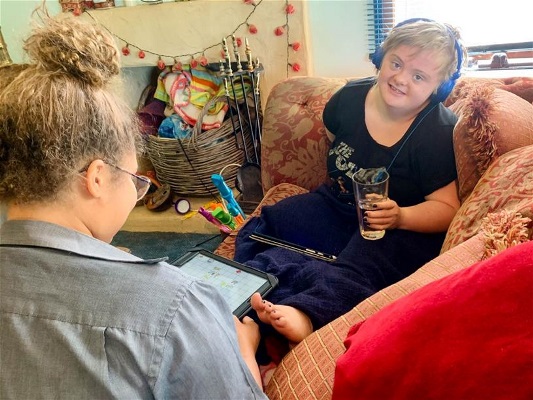Blogs
AT stories and reviews from your peers
Accessible Eco Straw
5 November 2018
By Guest Blogger: Karen Austin
 The humble drinking straw has been causing quite a stir in the last few months with conversations mostly focusing on the impact “single use plastic straws” or SUPS are having on the environment. There is no denying the negative impact that SUPS have had on the environment to date with The National Geographic estimating 500 million SUPS are used daily in the US alone.
The humble drinking straw has been causing quite a stir in the last few months with conversations mostly focusing on the impact “single use plastic straws” or SUPS are having on the environment. There is no denying the negative impact that SUPS have had on the environment to date with The National Geographic estimating 500 million SUPS are used daily in the US alone.
A brief look into the history of drinking straws revealed that the oldest drinking straw ever found is an estimated ripe old age of 5000 years old, from 3000 BC. It was found in a Sumerian tomb and was made of gold and then inlaid with the precious blue stone, lapis lazuli. The Sumerians made straws to drink beer with, most probably to avoid the solid by-products from the fermentation process. In 1888 Marvin C Stone patented the first modern drinking straw which was made of paper. Then in 1938 Joseph Friedman designed the plastic bendy straw or SUPS, that we know of today, which could also be used for hot beverages unlike the previous paper straws.
The SUPS have been widely used within the disability community, especially by people with dysphagia, muscle weakness & tremors. In some countries, there has been a push to ban the use of SUPS, with some European countries already taking steps to phase them out. The Australian government has yet to commit to the ban on straws but has recently enforced a ban on single use plastic bags which is suggestive that straws will follow suit.
Luckily there are some great alternatives to SUPS on the market already. Unfortunately, some are not very disability friendly but hopefully in time, as the single use straws are phased out, more products will be designed.
- Stainless steel – the stainless-steel straws are probably the most widely used in regards to reusable straws. You can get straight ones, slightly angled ones, rose gold coloured ones & even one with a silicone tip. The silicone tip is great for those who are at risk of damaging their teeth.
- Silicone – the silicone straw is one of the more hygienic straws on the market as bacteria have trouble sticking to it. Silicone is a tough material that can withstand very high temperatures hence why you are now finding muffin trays etc made out of silicone. Silicone will not take on odours nor distort in heat/cold.
- Bamboo – the bamboo straws are relatively new to the market with some people preferring the feel to silicone or stainless steel. Bamboo straws are probably the most sustainable option in that when it eventually starts to fray it can simply be thrown into the compost. Bamboo is not suitable to be left in water (as it swells) so if you leave a straw in your drink bottle all day then bamboo is probably not the kind of straw you should use.
- Drink bottles with inbuilt straws – One of my personal favourites is the drink bottle with inbuilt straws which were originally designed for cyclists. I always have one of these in my wheelchair backpack.
- Hydration systems – hydration systems provide a vessel or bladder (most often in a backpack) to fill with liquid. A very long flexible straw comes from the bladder to provide a hands-free hydration experience. These are great for wheelchair users who have limited hand movement and can be hooked up so that the straw is near the mouth for a hands-free operation.
- Paper/Plant based straws – these are great for cold liquid especially when you’re out and about. They can get soggy so not necessarily suitable in every situation.
When using reusable straws, it is important to also purchase the equipment for cleaning them. Most places who sell the reusable straws also sell a straw cleaner. I find having these brushes on hand next to the washing up liquid ensures the straws are cleaned each day. I also have a weekly bottle/straw wash where I pull everything apart and thoroughly clean every section.
- Fill the sink with hot soapy water and soak the straws.
- Clean the inside of the straw using a straw brush or pipe cleaner.
- You can also place the straw into a jar of hot soapy water & shake thoroughly.
- Once a month straws may be placed in a pre-boiled solution of 1 part vinegar to 3 parts water for a few minutes before rinsing thoroughly.
- Some straws may be dishwasher safe but please follow the instructions that came with the straw.
Happy Drinking!
Useful links:




Leave a commentOrder by
Newest on top Oldest on top